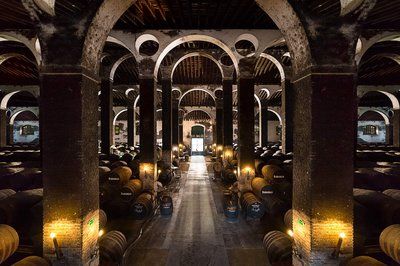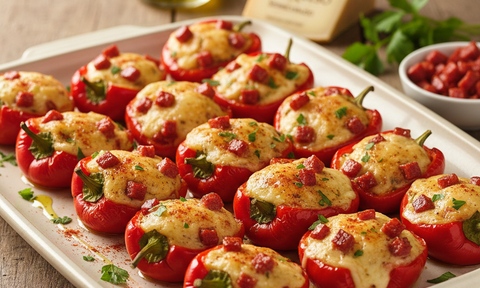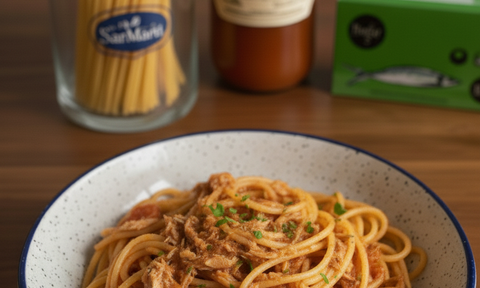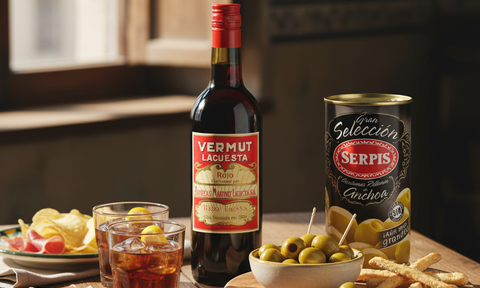There’s wine, and then there’s Sherry — the quiet overachiever from the south of Spain that can dance from salty aperitif to dessert diva without changing shoes.
If you think Sherry is just that dusty bottle your tita used for trifle, think again. The wines of Jerez are some of the most fascinating, food-friendly, and frankly underappreciated treasures in the world. And at Terry’s, we think it’s time they had their moment.

A 3,000-Year Overnight Success
Before influencers, there were Phoenicians — and they were already making wine in Andalusia around 1100 BC.
Romans loved it, Arab traders named it Šerīš, and the British fell so hard for it that they rebranded it as “Sherry.”
By the 1500s, barrels of this liquid gold were sailing around the world — literally. Magellan’s crew brought Sherry on their voyage to circumnavigate the globe. Priorities: solid.
Centuries later, those same breezes still blow through bodegas in Jerez, where rows of old oak casks quietly do their magic. Every drop you drink today carries a bit of that history — sun, sea air, and slow ageing in wood.
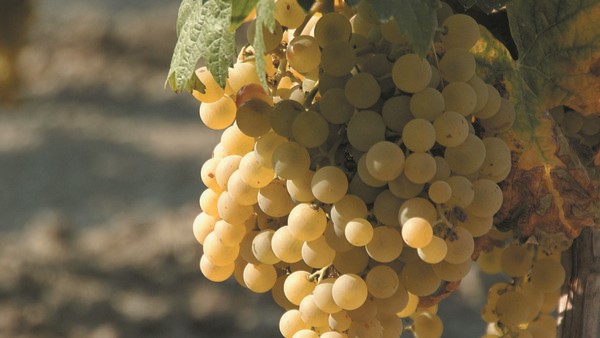
The Science (and Sorcery) Behind It
We’ll keep this simple — no chemistry degree required.
1. One humble grape, endless stories.
Sherry starts with the Palomino grape, grown in chalky albariza soil that looks like crushed seashells. Add Andalusian sunshine and a breeze from the Atlantic, and you’ve got nature’s masterclass in balance.
2. The fortification trick.
After fermentation, winemakers add a touch of grape spirit to fortify the wine — which helps it age gracefully instead of turning grumpy.
3. Two ageing paths, one genius result.
- Biological ageing happens under a thin veil of yeast called flor. It keeps the wine safe from air and gives us styles like Fino and Manzanilla — fresh, dry, slightly salty, like sipping sea spray.
-
Oxidative ageing lets the wine meet air, darkening and deepening it into nutty, toffee-toned glory — that’s your Oloroso and Cream Sherry.
Some Sherries, like Amontillado, get the best of both worlds — starting bright, ending bold.
4. The Solera system: where time plays bartender.
Barrels are never fully emptied; new wine is added to older ones, creating a living blend of vintages. The result? Every sip carries whispers of decades past — a kind of drinkable family tree.

A Flight Through Flavour
At Terry’s, we’re pouring a special Sherry Flight from November 3 to 30, 2025 — four glasses that tell the whole story of Jerez, one sip at a time.
Sherry Pairings
La Guita Manzanilla
🍷 Style: Dry, crisp, saline
💭 Tastes Like: Sea breeze, almonds
🍽 Perfect With: The Gilda — anchovy, olive, guindilla pepper
Amontillado Del Príncipe
🍷 Style: Amber, nutty, elegant
💭 Tastes Like: Toasted hazelnut, caramel
🍽 Perfect With: Pan Tumaca con Jamón de Teruel
Oloroso Almirante
🍷 Style: Rich, warm, spiced
💭 Tastes Like: Toffee, walnut, cocoa
🍽 Perfect With: Morcilla Ibérico & Potato Confit
La Capitana Cream Sherry
🍷 Style: Sweet, velvety
💭 Tastes Like: Raisin, vanilla, chocolate
🍽 Perfect With: Foie & Rum Raisin Pâté (2 pcs)

Why Sherry Works with Basically Everything
Sherry isn’t picky. It’s the friend who can talk to everyone at the table.
- Tapas: The salty tang of Manzanilla with anchovies, or Amontillado with jamón. Classic.
- Cheese: Oloroso loves aged Manchego; Cream Sherry flirts shamelessly with blue cheese.
- Mains: Add a splash ofAmontillado to pan sauces or braised meats. Instant depth, zero effort.
- Dessert: Cream Sherry and Pedro Ximénez over ice cream? Chef’s kiss.
- Cocktails: Try a Rebujito (Manzanilla + lemon soda + mint) or replace vermouth with Amontillado for a Spanish twist on a Manhattan.
Basically, if you can eat it, Sherry can probably make it better.
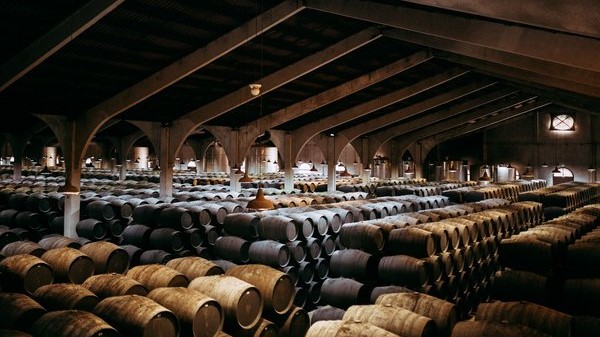
Fun Facts You’ll Want to Drop Casually Later
- Sherry barrels often get a second life aging Scotch — that’s where your favorite whisky’s toffee notes come from.
- V.O.S. means “Very Old Sherry” (20 years+); V.O.R.S. means “Very Old Rare Sherry” (30 years+). You’re drinking history.
- The bodegas in Jerez breathe through cathedral-like arches — tall, cool, and still perfumed with decades of wine vapors.
- Shakespeare mentioned Sherry (then called “sack”) in Henry IV*.* If it was good enough for Falstaff, it’s good enough for us.

Why Sherry Belongs at Terry’s
Because we’re a little like Sherry ourselves — classic, proudly Spanish, sometimes misunderstood, but always the life of the table once you take that first sip.
We love wines that tell stories, that make friends lean closer and say, “Wait, try this.” Sherry does exactly that. It connects generations, recipes, and conversations — one pour at a time.
So come taste it with us. Learn, laugh, and maybe leave with a bottle (or two). After all, some stories are too good not to drink.

